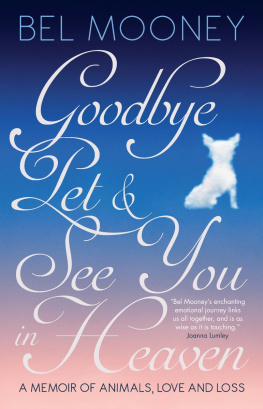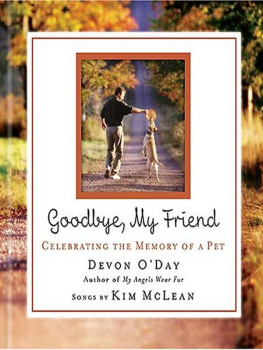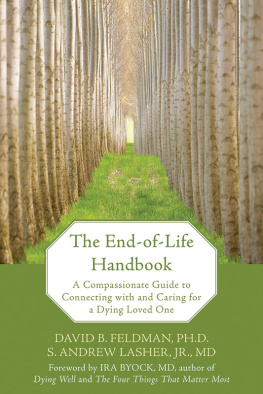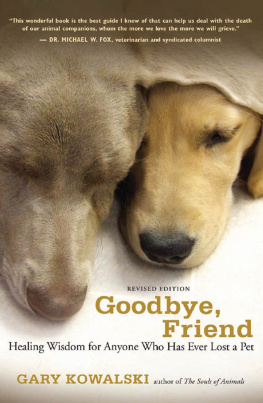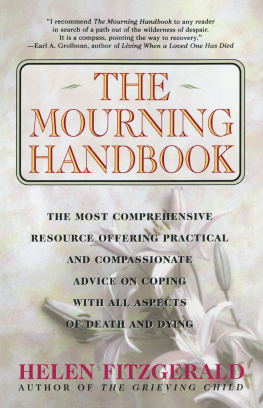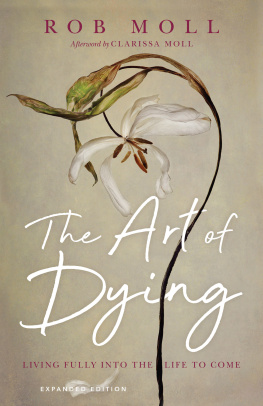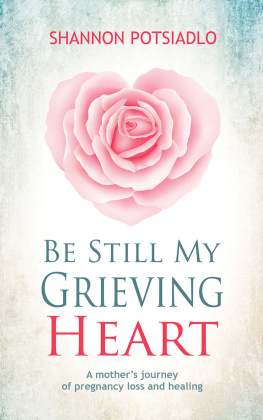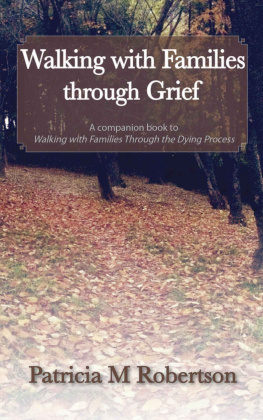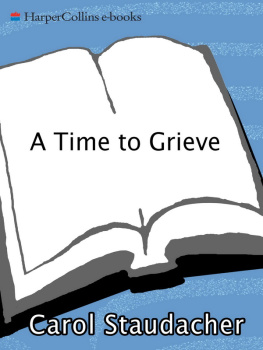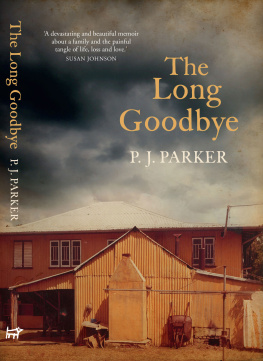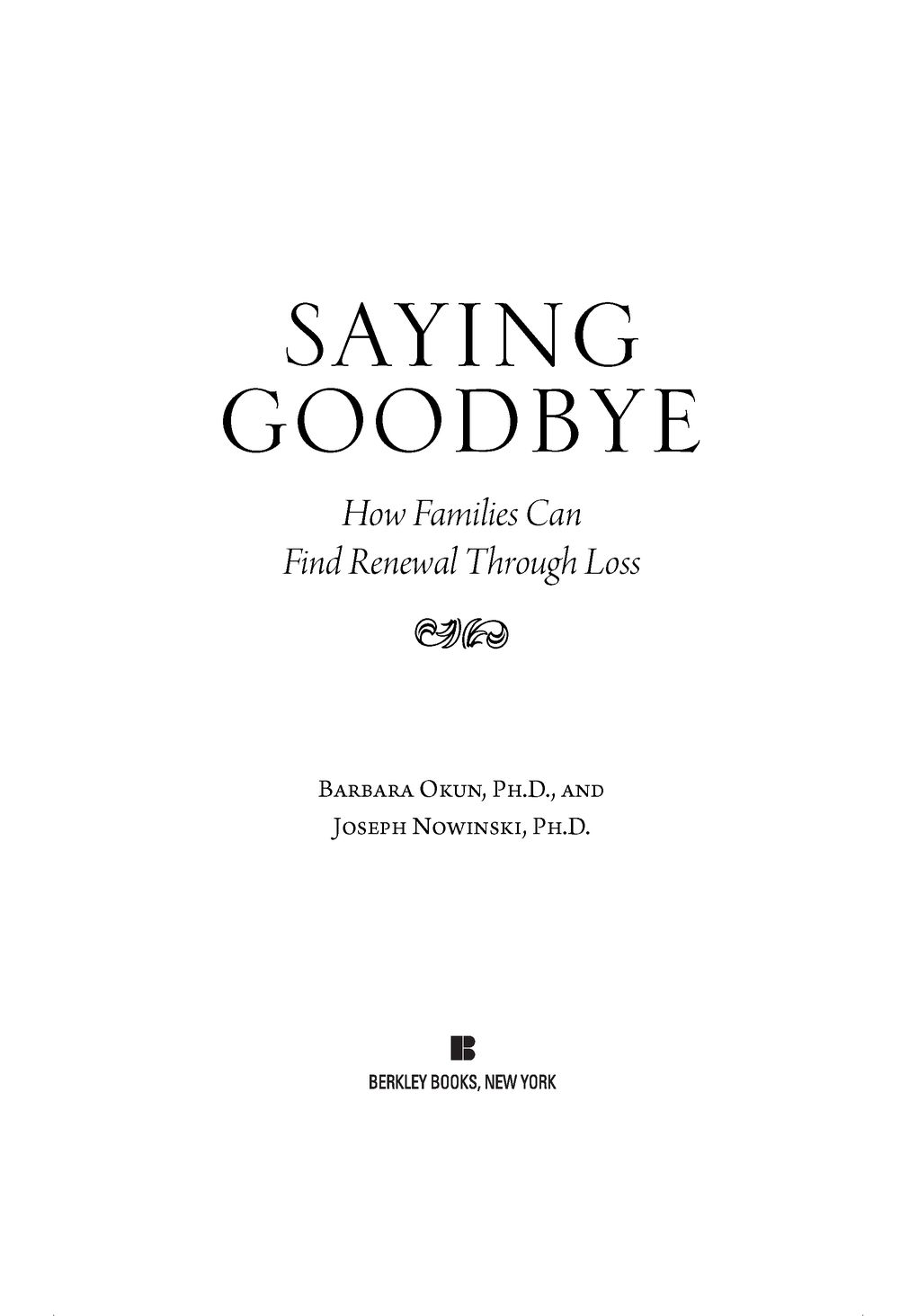Table of Contents
Most Berkley Books are available at special quantity discounts for bulk purchases for sales promotions, premiums, fund-raising, or educational use. Special books, or book excerpts, can also be created to fit specific needs.
For details, write: Special Markets, The Berkley Publishing Group, 375 Hudson Street, New York, New York 10014.
In loving memory of Sherman
from B.O.
and
In grateful memory of all those whose lives touched mine before saying goodbye
from J.N.
Bereavement is a universal and integral part of our experience of love. It follows marriage as normally as marriage follows courtship or as autumn follows summer. It is not a truncation of the process but one of its phases; not the interruption of the dance, but the next figure.
C. S. LEWIS
Introduction
THE NEW GRIEF
If you are reading this book, it is probably because someone in your familyor someone you lovehas been diagnosed with an illness that is terminal or life threatening. Although youve learned this alarming news, you really dont quite know what it means. Is death imminent? Is the condition treatable, and if so, what are the options and what is the prognosis? What does the ill family member need to do now? What do you need to do?
If the above describes you, rest assured you are not alone. Thanks to ongoing advances in medical diagnosis and treatment, life expectancy in countries like ours continues to grow. These advances have resulted in a sea change in the nature of death, which has evolved into a process rather than a more or less sudden event. Consequently, dying has created changes in the way we grieve. Those changes are the subject of this book.
In her groundbreaking book, On Death and Dying, first published in 1970, Elisabeth Kbler-Ross identified a process that she believed individuals pass through when they are confronted with death. This process begins with denial of the loss and ends in its acceptance. At the time her book appeared, sudden and unexpected death was much more common than it is today. The grief associated with that kind of loss is captured powerfully in Joan Didions memoir The Year of Magical Thinking, which recounts her reactions to her husbands sudden death and which is dominated by a persistent element of disbelief. Didions husband, the writer John Gregory Dunne, collapsed and died of a heart attack in the midst of eating dinner. Although he had a heart conditionindeed, he had a pacemakerJohn apparently was experiencing no symptoms up to the moment of his collapse.
Didions initial response to her husbands death typifies what Kbler-Ross called denial. She refused, for example, to read his obituaries. She refused to throw away his clothes. And she avoided going places that would remind her of him.
As useful as the Kbler-Ross model may have been in its time, the realities of death and dying have changed dramatically in the intervening forty years. If the kind of grief that Kbler-Ross wrote aboutand Joan Didion experiencedrepresents what we could call traditional grief, then it stands in contrast to what could be called contemporary grief, which is defined by a very different set of circumstances. You could also call this the new grief. This new grief exists today as a direct result of the increasing ability of modern medicine to stave off death.
Today, having a loved one live with a terminal diagnosis for an extended period of time is fast replacing sudden and unexpected death as the norm. Consider, for example, the fact that two thirds of those who are diagnosed with cancer currently have a five-year survival rate. Thanks to an ever-growing body of medical advances, doctors are able to successfully cureor arresta number of illnesses that once were likely to lead to sudden or quick death. The good news is that a diagnosis of cancer (or coronary artery disease) no longer means that death is imminent. In fact, today over 1.4 million cancer survivors are more than twenty years past their initial treatment episode. The same is true for heart disease: The number of deaths immediately following a heart attack has decreased dramatically and continues to do so.
The result of all of this is that death has become less and less a sudden and unexpected event. In its place has come a process that begins with a life-threatening diagnosis, proceeds through a period of treatment (or treatments), and ends eventually in death. This process means that both the terminally ill individual and the family are increasingly confronted with the need to live with death for a prolonged period of time.
For an example of contemporary grief, consider the experience reported by Eleanor Clift in her memoir Two Weeks of Life: A Memoir of Love, Death, and Politics. Clifts husband, Tom, was diagnosed with kidney cancer fully five years before he died. Tom spent the last ten weeks of his life at home, in a bed that hospice services had set up for him.
Eleanors situation describes what more and more people are experiencing. Unlike Didion, Clift had a good idea at least four months in advance that her husband was approaching death. She knew this when her husbands oncologist advised them to discontinue chemotherapy.
Regardless of whether it comes suddenly and unexpectedly or slowly with much advanced notice, the death of a loved one leaves us with a feeling of loss. That is unavoidable, given our human capacity to form attachments. In a sense, our attachments define us. They help us know our place in the world. When we lose an attachment, the connection to that part of our identity is broken. In a word, we lose a part of ourselves. And we grieve that loss. That said, there is also a case to be made that contemporary grief differs in significant ways from traditional grief.
The New Grief
So the reality is that sudden death has been replaced by a process that begins with a terminal diagnosis. But what exactly does that wordterminalmean? Typically, it refers to a process that can last anywhere from months to years. The process of dying may be interruptedonce, twice, or many timesby periods of remission. It may be extended by increasingly sophisticated pharmacological, medical, and surgical technologies.
Because the nature of death and dying has changed so dramatically, the way we grieve has also changed. The new grief differs from traditional grief in significant ways, not the least of which is that it includes the terminally ill person. In addition, what has increasingly become a protracted process as opposed to an event not only leaves individuals to mourn but typically draws in the entire family of the dying person for months or even for years. This process has the potential to alter lifestyles and force families to confront issues that once were dealt with only after the death of the loved one. It can easily evoke issues from the past that were never fully addressed or resolved.
The fact is that grief today is a family matter as much as it is an individual one. What is needed is a new templateone that is relevant to families and their experience. That is what we present here. This model is intended to be a road map that you and your family can turn to as you navigate your way through the current realities of death and dying. And by the way, when we use the word


